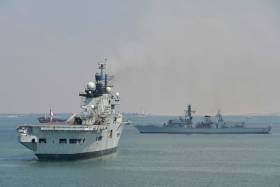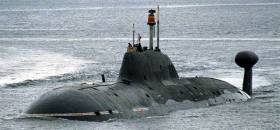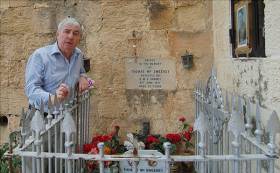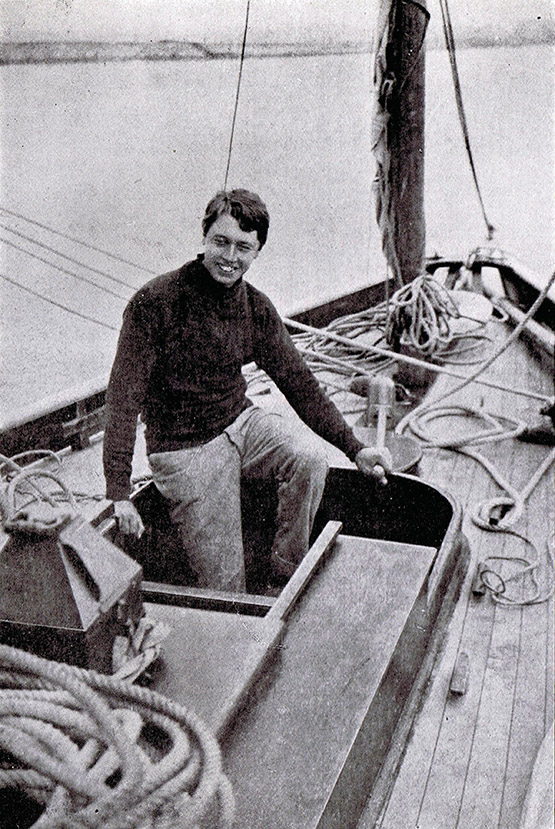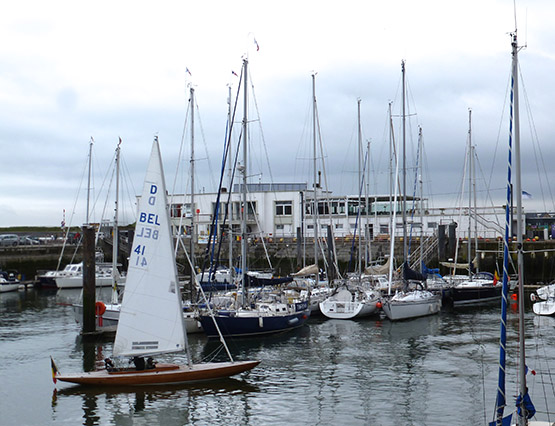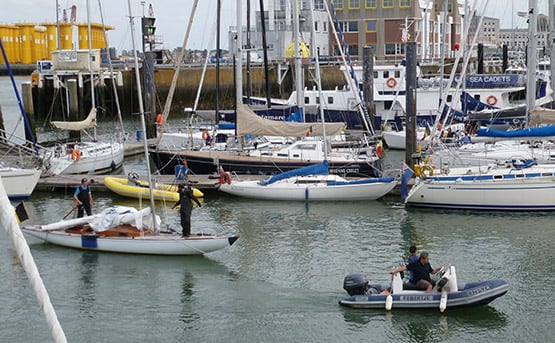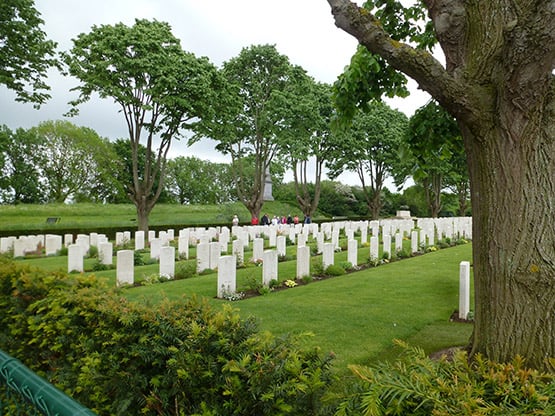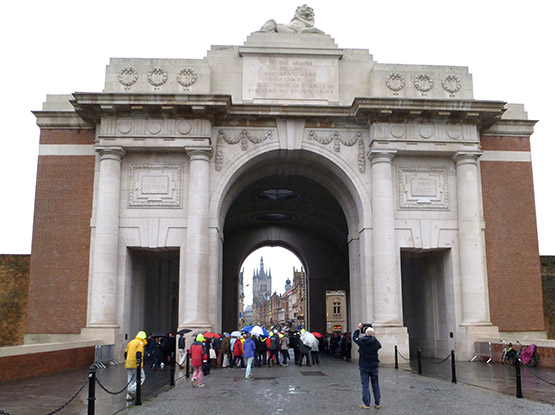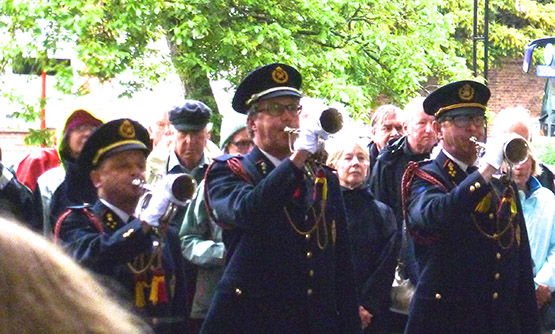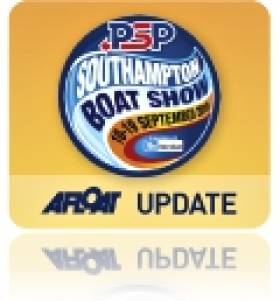Displaying items by tag: Royal Navy
Small Yet Fast Royal Navy Patrol Craft to Pay Visit
#FastPatrols -A pair of small yet high-speed Royal Navy Inshore Patrol Craft in which one served in Gibraltar are to pay a visit to Dublin Port,writes Jehan Ashmore.
The ‘Archer’ class HMS Blazer along with HMS Ranger are to arrive today. They belong to the 14 strong P2000 Fast Inshore Patrol Craft that form the First Patrol Boat Squadron.
Primary role of the P2000’s is to support the University Royal Naval Units (URNU) but they also contribute to a wide range of Fleet tasking. Among them fishery protection duties and safeguarding the integrity of the UK's territorial waters.
The craft provide training and maritime experience for University Royal Naval Unit students and also provide support to Fleet tasking and exercises.
HMS Blazer (P279) is the URNU at Southampton Solent University, Portsmouth University and Southampton Institute.
As for HMS Ranger, this sister is the URNU at Sussex University, however she served for 13 years in the Gibraltar Squadron before returning to the UK in 2004.
Some characteristics of the Archer P2000 craft are listed below.
Tonne Displacement: 54
Top Speed: 25 knots
Nautical Range: (550 miles)
Weapons: DS3OB 30mm Gun and GAM BO 20mm Gun
The visiting Royal Navy pair are to berth at Ocean Pier from where HMS Portland also called in recent years. The Type 23 Duke class frigate was referred to related naval news regards the recently decommissioned RFA Gold Rover.
#Westminster - A British Royal Naval Type 23 frigate that docked in Dublin Port is half-way through a three-day courtesy call to the capital, writes Jehan Ashmore.
The Duke class HMS Westminster (F237) has returned to recent active service following an extensive upkeep and trails period.
This involved dry-docking the Sea Wolf Guided Missiles equipped frigate in Portsmouth Dockyard. The extensive upgrade took place to the frigates combat and weapon systems. The works were carried out on the 133m frigate by BAE Systems.
The refit also enabled a thorough overhaul of the frigate’s main propulsion systems that delivers a speed of 28 knots.
Also work to hull was subjected to repairs and preventative maintenance. This is to ensure the vessel will be in the best possible condition for years ahead of operational duties.
HMS Westminster follows in the wake of another naval visitor of the Belgium Navy, BNS Castor designated a Ready Duty Ship (RDS).
At the beginning of this week the UK Ambassador to Belgium was on board the RDS off Zeebrugge. This was to mark the 30th anniversary of a ferry disaster that took place off the North Sea port.
The Ready Duty Ship departed the port today upon completion of a longer extended four-day shore leave. This saw the RDS occupy a city-centre berth. As for HMS Westminster the vessel berthed downriver along Ocean Pier.
Reports Say Russian Submarines Tracked In Irish Sea
#RussianSubs - Russian submarines have been tracked through the Irish Sea by the British military in recent days, according to Mail Online.
Two nuclear-powered Akula-class submarines were reportedly monitored by Royal Navy radar as they travelled to meet with a third sub tracked by Norway towards the English channel.
It’s understood all three were tracked by a Royal Navy sub before they went deep.
The situation comes after Russia unveiled a new stealth submersible craft amid escalating tensions over Russian President Vladimir Putin’s interventions in Syria.
Mail Onine has much more on the story HERE.
Podcast: Shackleton, Blue Economy & Open Sea Swimming
Hello and welcome aboard your maritime programme Seascapes, this week we bring you highlights from the unveiling of a fine sculture by Mark Richards in Athy, Co Kildare on the centenary to the day of the rescue of the Endurance crew from Elephant Island and the unveiling of a sculpture by Mark Richards of Sir Ernest Shackleton beside the Athy Heritage Centre in his home place complete with an Honour Guard from the Irish Naval Service, we’ll be talking to Kevin Kenny of Athy Heritage Centre ; Commander Cormac Rynne of the Irish Naval Service; Arts Officer Lucina Russell and Jack L who performed “The Wearin’ of the Green” and we also met up with Jonathan Shackleton ...... also this week Dr Gordon Dalton of MAREI on the Maribe project and the outcome of a recent conference held in Cork....first this week here on Seascapes to our Galway Studios where we can hear from Features Editor Gery Flynn of Inshore Ireland Magazine on what’s in the latest edition ...
Features Editor of Inshore Ireland magazine – Gery Flynn ....next here on Seascapes to Athy in Co Kildare where .............to coincide with the very day a hundred years ago on the 30th of August that epic rescue of The crew of The Endurance from Elephant Island was marked by a sculpture by Mark Richards being unveiled by the Mayor of Kildare , Cllr Ivan Keatley and Alexandra Shackleton with an honour guard drawn from the Irish Naval Service in attendance ....
Also present for the ceremony was local musician Jack L who spoke briefly to Seascapes before he performed this song...
Jack Lukeman performing The Wearin’ of the Green” next we spoke to Jonathan Shackleton ...
Also in attendance was Commander Cormac Rynne of the Irish Naval Service.....
From Commander Cormac RYNNE to Kildare Arts Officer , Lucina RUSSELL..
The Athy Heritage Centre is in the heart of the town and is hosting an exhibition “ By Endurance We Conquer “running until February of next year....
Lets have a final word from Kevin Kenny of Athy Heritage Centre....
MARIBE is Marine Investment for the Blue Economy , Dr Gordon Dalton who is based at MaREI ERI, at University College Cork is Maribe Project Coordinator , we last talked to him earlier this year
Dr Gordon Dalton of MAREI /ERI – Maribe Project Coordinator
We wish swimmers the “Swim Sisters” team of Lynsey Dunne -Connacht, Mary Bolger-Hinds- Leinster, Claudine Hughes -Ulster and Maighread McMahon from Munster , they will attempt to become the first four provinces, all-female team to swim the length of the largest freshwater lake in these islands , Lough Neagh – a distance of approximately 30.5km.
The “Swim Sisters “ are four experienced open water swimmers and members of the Irish Long Distance Swimming Association. And it was through their love of open water swimming that the team the " Swim Sisters " came together. Two of them , Lynsey & Maighread are veterans of two successful English Channel relay swims.You can read more about their swim on the Seascapes webpage....
That’s it for this week on your maritime programme, on the sound desk this week Niall O Sullivan , next week here on Seascapes we bring you the story of the Aud and Sir Roger Casement and highlights from the commemoration held on Banna Strand earlier this year at Easter .....Grainne McPolin was there for Seascapes when she spoke with with H.E. President Michael D Higgins we hear from local historian Pat Lawlor about Sir Roger Casement the humanitarian, explorer and seafarer and descendants of Captain Monteith and Sir Roger Casement ; until next Friday night, tight lines and fair sailing.”
A popular wedding venue a Wedding Fair is being held in The National Maritime Museum of Ireland, Haigh Terrace, Dun Laoghaire on Sunday 18th September open from 12 noon....
Ireland’s National Maritime Museum is housed in Dun Laoghaire’s 180-year-old Mariners Church, directly opposite the new DLR Lexicon library and easily accessible by DART suburban train and several bus services. The museum’s greatest artefact is probably the building itself as it is one of a few custom built places of worship for seafarers remaining intact in the world to-day.
Experienced guides will bring you on a voyage of discovery enthralling you with stories of discovery, heroism, war and disasters at sea. You will learn about maritime history, exploration, navigation, radio, deep-sea cable technology, nature, wildlife and view art inspired by the sea.
See the 10-tonne revolving Baily Optic, try the electrified steam engine and pause to reflect at the Titanic exhibit, the re-created radio room, the Royal Navy prisoners docks and the war memorial. Try sailor’s knots, learn how they lift heavy weights, be photographed with the pirate, research in the library, visit the shop and café and much more.
An Eerie Feeling – My Sense Of Hanging From The Yardarm
There are moments in life which are inexplicable.
Such it was when I stood at the gate of a very old graveyard in Vittorosia just outside Valetta in the capital of Malta.
I had never been there before yet something told me where, amidst the many graves, was the one which I was seeking and, without hesitation I walked through the graveyard, straight to it.
I cannot explain how I sensed exactly where the grave of the young sailor I was seeking, was located.
Something told me where he was buried (pictured below).
There was a reason I was looking for his grave.
He was the last man to be hung from the yardarm by the British Royal Navy. A horrible, terrible, brutal punishment.
He was Irish.
He was from Cork, my home county
He was my namesake – Thomas McSweeney.
Incredible?
Definitely.
For some time I had been researching the story of this young man who, at the age of 19, enlisted in the Royal Marine and who was hung from the yardarm of the ship on which he served four years later, condemned in a questionable courtmartial, which had seeds of anti-Irishness, for murder.
It is the subject of this edition of my radio programme. THIS ISLAND NATION, which has personal emotion for me.
When I stood at the grave of that young man, it was an odd feeling to see one’s own name on a headstone and to learn that, 139 years after his execution this month, unidentified Maltese people still honour him by putting lights and fresh flowers on his grave.
Listen to the Podcast of the programme below for an unusual, different story.
HMS Caroline: Shared Belfast Commemoration Expresses New Attitude To World War I In Ireland
Next Tuesday, May 31st, marks the Centenary of the outbreak of the Battle of Jutland off the northern coast of Denmark, the greatest sea battle of World War I (1914-18). In terms of the fire-power of the 250 vessels in action – many of them the most powerful first class battleships of their time – it may still be the greatest naval battle ever fought, even if its results were not clearcut during the engagement itself. For Jutland subsequently ensured that Imperial Germany’s surface fleet stayed largely in port, thereby closing off seaborne sources of supply. This contributed to the inevitable outcome of the Armistice on November 11th 1918, though not until after there has been much further slaughter on land between the warring armies.
Of the many ships which were present at Jutland, only one has survived. This is the C-class light cruiser HMS Caroline, which from the 1920s onwards served as the Belfast HQ of the Royal Naval Volunteer Reserve. She was decommissioned from this role some years ago, and there was some doubt as to her future. But her unique position as the only survivor of Jutland has seen a flurry of activity on the ship for the past eight months and more, with the Caroline getting the benefit of a €20 million Lottery Heritage grant for her restoration as the centrepiece of a Naval Museum which will start to go public from next Tuesday. W M Nixon takes up the story, and goes on to provide the unexpected follow-up of how a leading player in the Howth gun-running of 1914, a man honoured in Irish history, was last weekend celebrated in Belgium as a great British hero of World War I.
In terms of shared memories handed down through the generations, a hundred years is little enough time. But Centenaries offer an opportunity for taking stock, a time for re-shaping attitudes to acknowledge the fact that combatants in any conflict had a shared humanity, however opposed their views and objectives may have been. The recent unveiling in Glasnevin of the impressive Memorial which lists everyone killed in the Rising of 1916, regardless of which side they were on, was a significant step. And next week’s shared ceremony in Belfast at HMS Caroline, which will include the Irish Naval Service in an official capacity, will acknowledge the many Irish sailors - sailors from what is now the Republic - who lost their lives at Jutland just five weeks after the Easter Rising in Dublin.
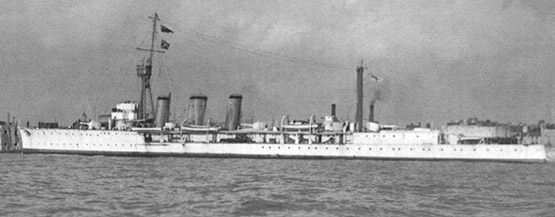
HMS Caroline in her original form – she was commissioned in December 1914
The enormity of the carnage and endless stalemate of the Great War, and the industrialisation of the means of fighting with the institutionalisation of those who found themselves involved, is something almost beyond our grasp today, enjoying as we do our lives of multiple choices and continually available diversions. And when you read the obnoxiously gung-ho editorials of the pro-war newspapers of a hundred years ago, cheerfully exhorting young men to an almost certain and very unpleasant death, it is to realize that the past is indeed a different country.
Yet it’s a country which we have inherited and must try to understand. To do so, perhaps the most helpful way is through a contemplation of the individual stories involved, for in total war individuality is one of the first casualties.
But the individuality of each sailor is quickly lost in the sheer weight of statistics. The death toll at Jutland may have seemed minor by comparison with the wholesale slaughter which occurred when some new army offensive was launched on the Western Front. But the figures are chilling nevertheless, with Royal Navy sustaining more than 6,000 deaths. This was more than twice the German losses, but although Britain had lost such prestige ships as the largest battleship HMS Queen Mary (she blew up with 1266 deaths – only 18 survived), the Royal Navy was still powerful enough after the battle to ensure that the German fleet was confined to port.
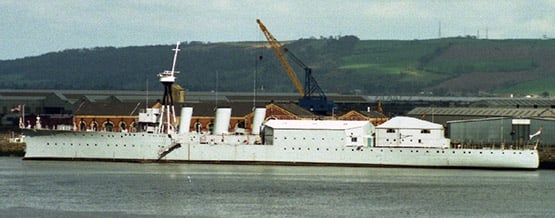
From the 1920s, HMS Caroline served as the Belfast HQ of the Royal Naval Volunteer Reserve. Her accommodation was decidedly limited, so later additions included what looked to casual observers to be sheds rather than cabins.
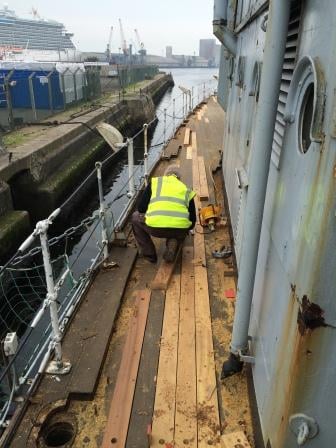
Work under way restoring and where necessary replacing HMS Caroline’s deck
Of the death toll in the British side at Jutland, at least 350 were from Ireland, and while it’s reckoned that 90 were from what subsequently became Northern Ireland in 1921, recent research suggests that 266 were from what became the Free State and is now the Republic, with nearly half of them being from the great naval port of Cork Harbour.
At Belfast Harbour, the personal touch will be manifest as more than 200 relatives of those from Ireland who were lost at Jutland will be attending next Tuesday’s ceremonies, whose staging will quite rightly cause us to confront yet again the sheer mindless horror of the Great War. But last weekend in Belgium, we were remembering people – sailing people to be precise – who had gone off to the Great War in an almost festive frame of mind.
In my case, involvement came through Asgard and the Howth gun-running of 1914. We all know about Erskine and Molly Childers and Mary Spring-Rice and their professional crew of Charles Duggan and Pat McGinley from Gola Island in Donegal. But it was the sixth member of Asgard’s crew, Gordon Shephard, a keen amateur sailor and personal friend of Erskine and Molly Childers, who remained something of a mystery.
Shephard’s involvement in the gun-running was an even greater mystery to his fellow officers in the British Army, for he was a career soldier of impeccable background, Eton-educated and a product of Sandhurst military academy. But he had a liberal frame of mind which strengthened as he grew older, and he was - like Childers - a strong supporter of the Irish Home Rule movement. So when it was proposed to smuggle a consignment of 1500 German guns into Ireland aboard Childers’ Asgard and Conor O’Brien’s Kelpie in response to the importation into the north in April 1914 of 24,000 German guns by the anti-Home Rule Ulster Volunteer Force, Shephard was very much involved, though he requested he be called “Mr Gordon” during it all, as the name Shephard might have alerted the authorities and jeopardised his military career.
That Shephard was part of an English social elite there is no doubt, and the Irish people involved were definitely pillars of society too. So much so, in fact, that in advance of last night’s 185th Anniversary Dinner of the Royal Irish Yacht Club in Dun Laoghaire, I was told that of all Ireland’s yacht clubs it was the RIYC which was most closely connected to the gun-running. For although Erskine Childers bought his first cruising yacht, the 2.5 Rater Shulah, from G B Thompson of the Royal St George YC in 1892, and subsequently bought a Water Wag for use on Lough Dan in what was then Kingstown in 1894, he never seems to have been a member of any Irish yacht club, whereas Conor O’Brien was to be closely associated with the Royal Irish, and the 600 guns from his old ketch Kelpie were transferred to the auxiliary yacht Chotah owned by Sir Thomas Myles RIYC, who subsequently landed them on the beach at Kilcoole County Wicklow.
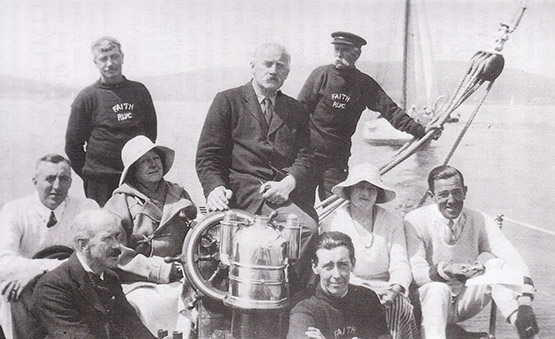
Sir Thomas Myles with friends and crew aboard his sailing cruiser Faith (RIYC) in Dublin Bay in the late 1920s. In 1914, with his 60ft auxiliary-powered Chotah, he took on board the 600 guns brought from the Belgian coast by Conor O’Brien on Kelpie, and landed them on the beach at Kilcoole, County Wicklow. Photo: Courtesy RIYC
Yet apart from the fact that since 1911 this mystery man Gordon Shephard had been a fellow-member with Erskine Childers in the London-based Royal Cruising Club, with his subsequent wartime career with the Royal Flying Corps being one of great distinction, little enough was know about him until enthusiastic amateur historian Michael Branagan discovered that a Memoir of Gordon Shephard, edited by Sir Shane Leslie, had been privately printed in 1924, and a copy of it was in the library at Castle Leslie in County Monaghan.
Michael being Michael, he got himself up to the depths of Monaghan and spent what must have been the most of a day making two good photocopies of it, one of which he gave to me, and thus we both now know more about Gordon Shephard than you’d have thought possible, yet somehow he remains as elusive as ever.
For here was a young Army officer who accidentally shot himself in the foot during some horseplay in the Mess, yet his charm and abilities were such that he was able to continue his army career despite being described by one fellow soldier as “the least military man I ever met”.
At Eton he’d been criticised by his tutor as being too relaxed in his attitude to discipline, yet when he took up cruising with great enthusiasm around the age of 20, his light hand of authority proved exactly right for getting the best out of his crews. In 1911 he was awarded the world’s premier cruising trophy, the RCC Challenge Cup, for an extraordinary voyage to the furthest point of the Baltic with his 9-ton yawl Sorata. And then in 1913 he was awarded it again for his even more famous Autumnal venture of bringing Erkine and Molly Childers’ Asgard from Norway to Conwy in North Wales via the Shetlands and the Outer Hebrides through severe storms, including a genuine Force 11.
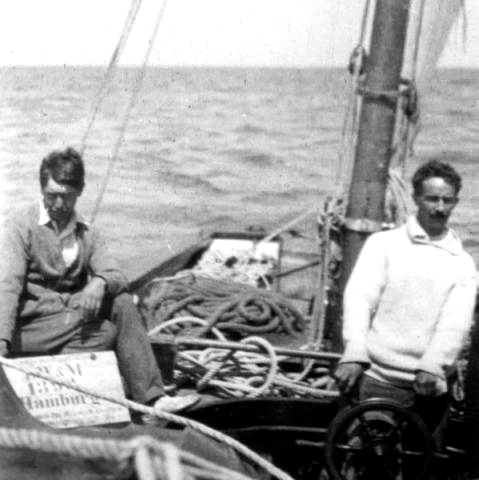
Gordon Shephard and Erskine Childers aboard Asgard with the Howth guns, July 1914. Although everyone else was keen to have their photo taken, Shephard reckoned that as a serving army officer, it might not be a good career move to appear full face
It was typical of the affection in which Shephard was held by his many friends that, owing to his leave running out, he’d to return to his regiment leaving Asgard in Conwy, yet not once did Childers complain about it. This was despite the fact that Shephard had been meant to deliver Asgard to Southampton. But far from complaining, Childers helped to put together the Shephard log which was awarded the cup.
When the gun-running proposal came up in May 1914, Shephard doesn’t seem to have hesitated at all in volunteering to go along. He was engaging company on board, with a nice line in humour, and in her personal log of the venture, Mary Spring-Rice records how he volunteered to cook the supper in rough weather when Asgard was wellnigh uninhabitable with the cargo of guns stowed everywhere. Shephard gallantly weighed in with the cooking of an enormous omelette. But when it was almost ready, he decided it needed an extra little something. So he tipped in the most of a tin of Lyle’s Golden Syrup. We’re told that Syrup Omelette tastes better than it sounds…..
Shephard played a key role in the actual landing of the guns at Howth, for although he’d to leave Asgard at Milford Haven for a week back on duty with the army, he was one of the few who knew the details of Childers’ berthing plans, and on that breezy July Sunday lunchtime a week later, he was stationed at the end of the East Pier in Howth for the crucial task of taking and securing the lines as Asgard came into port with the fresh wind right up her stern. Molly Childers made a superb job of the helming, but without those lines smartly made fast ashore, it could have gone very wrong. Yet thanks to Gordon Shephard on the quayside, all went like clockwork.
But within a week, the Great War had broken out, and with his military future now in the Royal Flying Corps which he had joined on its formation in 1912, his formerly pedestrian rate of promotion became meteoric. He had a magnificent war - if there is such a thing – and by 1917 at the age of 31 he had become the youngest Brigadier General in the British Army with many decorations including a Legion d’Honneur from the French for heroic service in 1915.
Yet he remained the same unassuming Gordon Shephard, refusing to become a “chateau general” despite his obvious talents in aviation innovation and strategic planning. Instead, he stayed with his units, and regularly visited each one at their various airfields, flying himself in a little scout plane to make regular personal visits to sort out problems and encourage his pilots.
Nevertheless the war took its severe toll on him. When we look at the photo of Gordon Shephard aboard Sorata in 1911, we’re looking at a photo of a youthful 25-year-old sailing enthusiast. But when we look at the photo of Gordon Shephard when he became a Brigadier-General just six years later, we’re seeing someone who looks about 50, and a badly worn 50 at that.
He died soon afterwards in a flying accident. He’d set out as usual on 19th January 1918 to fly himself to several of his units, but just short of the first airfield on his route, his little plane came spinning out of the clouds, and he suffered ultimately fatal injuries in the crash.
Without a care in the world. A youthful Gordon Shephard aboard Sorata aged 25 in 1911 Photo courtesy Castle Leslie
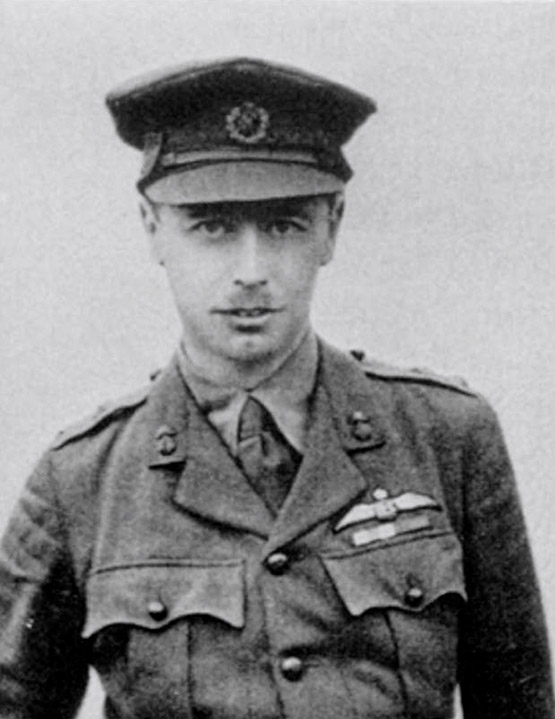
Brigadier-General Gordon Shephard in 1917 – at 31, he was the youngest Brigadier-General in the British Army, but he had pushed himself so hard that he looked more like 50
His funeral was an impressive affair, attended by an awesome array of the top brass, yet in the huge losses of the Great War, the name of Gordon Shephard slipped from view. As he left no family, he would have been forgotten were it not for the Howth gun-running and those two impressive awards of the Royal Cruising Club’s Challenge Cup in 1911 and 1913.
Belgium’s Royal North Sea Yacht Club at Ostend. While most of its fleet is cruisers and offshore racers, the club also has a class of vintage International Dragons. Photo: W M Nixon
This year, the RCC decided to hold a rally to Ostend to remember its many members who died in the Great War, and visit some of the battle sites of the Western Front over which Gordon Shephard had flown on many of his highly-valued reconnaissance flights. It was last weekend, and there was a gathering in the Royal Nord See Yacht Club, with a goodly part of the assembly was made up of people who’d sailed there. The pace was set by Commodore Henry Clay, who’d voyaged from Chichester Harbour in West Sussex with his wife Louise in Highlander, his little slip of an H Boat. Yet despite their cramped accommodation, the Commodore stepped ashore looking immaculate.
Dragon manoeuvres in Ostend. Immediately beyond is the H Boat Highlander, which RCC Commodore Henry Clay and his wife Louise had sailed to the Rally from Chichester Harbour in West Sussex. Photo: W M Nixon
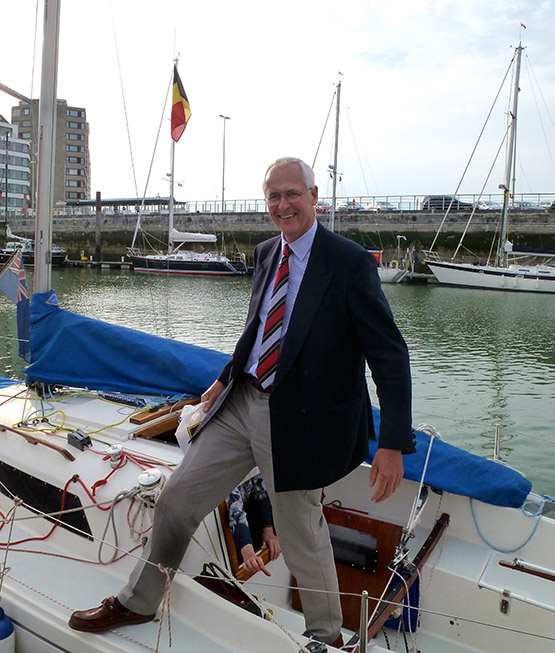
Setting the sartorial example. Despite being aboard the smallest boat in the fleet, the Commodore was the neatest of the lot of us. Photo: W M Nixon
With our trio from Ireland, we’d already done the quintessential Belgian thing with a visit that day to the ancient watery city of Bruges nearby, which is even more wonderful than you’d imagine if approached in the right spirit. And then in the RNSYC we were treated to a classic Belgian fishing port dinner of majestic cod with all the trimmings, and during it those of us with some knowledge of the club’s war heroes talked of them and their eccentricities (of which there were many) and their achievements.
Bruges evokes a sense of civilisation and peace – it takes an effort to realise that it has frequently been fought over, and the Western Front in the Great War was just up the road. Photo: W M Nixon
There’s no such thing as OTT in Bruges – some things are just even more normal than others. Photo: W M Nixon
It had been a sweet warm evening of early summer, but next day the rain eventually set in with Belgian thoroughness - probably the best conditions in which to see what’s left of the Western Front and its hundreds of cemeteries and memorial sites and former military installations, for I don’t think you could cope with it in bright sunny weather. But pleasant little houses and hamlets are everywhere - the gallant Belgians are determined to maintain normal life as much as possible after a war which displaced 600,000 of them from their homes, such that it was 1930 before life had returned to anything like normal, and all that with the next World War just nine years down the line…….
In Flanders Fields…..the former war zone in Belgium has hundreds of immaculately-maintained cemeteries. Every grave is kept to the same high standard, as no-one knows when some relative might call by, though many are the graves of soldiers “Known Only Unto God”. This happens to be the cemetery beside the Dressing Station where Canadian doctor John McCrae was based - he wrote one of the finest poems of the war, “In Flanders Fields”. Photo: W M Nixon
Our journey had extra specific purposes, as two of the group wished to plant poppied crosses at graves of relatives which the extraordinarily obliging staff had located in a sea of headstones,
Then like so many before us, we ended our tour at the Menen Gate in Ypres, Lutyen’s memorial masterpiece, for the Last Post at 2000 hours on Sunday evening.
In a human and civilising touch, the Last Post is now provided by the local Fire Brigade, as most of the military have moved on, while any remaining units are only on a short posting. For their part, the Ypres Fire Brigade make a very fine job of it. The first call of the bugles came through loud and clear, and then there was a pause while various groups laid wreaths with impressive natural dignity. There followed the second bugle call, resonating majestically in the acoustic perfection of the great arch. Then despite the large crowd, for a while it was so silent all you could hear was the steady fall of the rain. And birdsong. You get a lot of birdsong in Belgium.
The Menen Gate at Ypres – the little town was obliterated in the Great War, but when the inhabitants were finally able to return, they insisted on re-building it exactly as it had been before. Photo: W M Nixon
The captains and the kings and their many soldiers have all now gone – and in their absence, the Ypres Fire Brigade does a very good job of sounding the Last Post at the Menen Gate every evening at 2000hrs. Photo: W M Nixon
Having been to Ypres and having seen so much that is utterly moving or numbing in the countryside about it, we wish them well, those who will be gathering at HMS Caroline in Belfast next Tuesday. It is painful to remember. But it is worse to forget.
And then perhaps, as we get used to HMS Caroline being a ship of interest to everyone in Ireland and indeed to people throughout Europe and beyond, would it be too much to hope that she could become the centerpiece of a proper maritime museum? For although the Ulster Folk & Transport Museum along the coast at Cultra do have a small collection of boats of Irish interest, some are kept in store and not displayed at all, while others aren’t looking too happy amidst a maze of agricultural artefacts. Surely a port like Belfast could provide them with a proper home?
UK’s Most Modern ‘Daring’ Class of Destroyer to Dock in Dublin
#DaringDestroyer – One of the most modern high-tech UK naval destroyer's, the Type 45 HMS Dauntless (D33) is to make a first visit to Dublin Port this weekend, writes Jehan Ashmore.
Afloat understands this will be the first ever visit of a Type 45 destroyer to the Republic and follows last year’s visit of a sister HMS Duncan which made an inaugural visit to Belfast, her adopted city.
The 152m long ‘Daring’ class destroyer displacing 8,000 tonnes has a striking stealth superstructure to reduce radar signature detection likewise of a the smaller Dutch class frigate which paid a recent visit.
HMS Dauntless has an impressive array of weapons, and is notable as the first Daring class destroyer to fire the new Sea Viper missile, despite been the second in the series to be commissioned in 2010.
The Sea-Viper Missiles are the principal anti-air missile system which provides all-round defence – not just for the destroyer but for an entire naval task group. The system is to be used against all aerial threats some 70 miles away. In addition the missiles race towards its target at speeds in excess of Mach Four (over 3,000mph) using a series of tiny jets to manoeuvre, carrying out sharp turns at G forces no human could endure.
Another weapons system is the Phalanx, one of the most deadly last lines of defence for the Royal Navy. Phalanx is capable of engaging targets around one mile away, it is a radar-controlled Gatling gun which fires 20mm shells, spewing out 3,000 rounds a minute.
Mounted on the forecastle is a MK8 Gun which is featured on all Royal Navy destroyers and frigates.
She is also equipped with a Sampson radar, which is a sophisticated multi-function radar, an essential part of the air defence system for the Type 45.
Destroyers such as HMS Dauntless which has a crew of 180 can also take 60 troops and together they play an integral part in forming the backbone of the Royal Navy, committed around the world 365 days a year hunting pirates, drug runners or submarines, defending the Fleet from air attack.
In May, HMS Dauntless returned to her homeport, Portsmouth following a deployment to the Gulf in the Middle East where she spent the bulk of her time supporting US carrier operations in the on-going struggle against the fundamentalists of Isis.
In her breaks between providing air defence for US Navy flat-tops, HMS Dauntless visited Kuwait, Dubai plus Abu Dhabi and Bahrain, hub of RN operations in the Middle East.
During the four month deployment, HMS Dauntless sailed more than 47,000 miles, providing crucial support to Charles De Gaulle’s strike operations against ISIL – and before her USS Carl Vinson.
The aircraft carrier conducted maritime security patrols, reassuring the merchant traffic that the world depends on global trade.
The destroyers also participate in providing humanitarian aid after natural disasters. In such conditions the role of the stern flight deck is aided by a Chinook helicopter.
Paraglider Crashes into Clliff on Isle Of Arran
The Coastguard co–ordinated a multi-agency response to rescue a paraglider who crashed into a cliff on the Isle Of Arran yesterday.
Belfast Coastguard was contacted at 4pm by Police Scotland for assistance after a mid air collision between two paragliders on the Isle Of Arran. One of the paragliders managed to land but the other crashed into a cliff at Catacal about half a mile inland, sustaining injuries and suspended in an inaccessible location on the cliff.
Belfast Coastguard sent the Arran Coastguard Rescue Team and requested the Royal Navy Rescue Helicopter from Prestwick to attend. Members of Arran Mountain Rescue team were transferred to the cliff top by the rescue helicopter and will attempt to recover the paraglider using cliff rescue equipment.
Arran Coastguard Rescue Team are providing the on scene communications between airbourne and land based responders. Police Scotland and Scottish Air Ambulance are also on scene.
Royal Navy OPV to Make Appearance at Southampton Boat Show
#southamptonboatshow – In addition to the boats on display and that of the tallship Pheonix visiting the PSP Southampton Boat Show will be the Royal Navy's HMS Severn (P282), which too will be open to visitors albeit for one day.
HMS Severn will be a visitor attraction next Thursday 18th September. You are invited to come board the 1,677 tonnes OPV offshore patrol vessel on that day (between 1 and 4pm) when she is berthed opposite Solent Park. It is understood that she acted as the starter ship during the Tall Ships Race from Falmouth last month.
She is the second of the River-class built by locally at Vosper Thornycroft's Woolston yard in Southampton.
The 79m vessel is based in neighbouring Portsmouth Naval Base where she is part of the Fishery Protection Squadron that inforces UK and EU laws during 275 days spent at sea annually. Other tasks for her crew of 45 can be anything from fire-fighting to disaster relief operations.
She along with her sister ships, entered service in 2003 and they replaced the Island Class Patrol Vessels, where one of the vessels was converted into a private luxury superyacht.
#QEaircraftcarriers - BBC Scotland reports that Queen Elizabeth II is due to give her name to the largest warship built in the UK at a ceremony held this morning in Fife's Rosyth dockyard.
She will smash a bottle of whisky on the hull of the 65,000-tonne HMS Queen Elizabeth - the first of two new Royal Navy QE-class aircraft-carriers being built, the second is to be named HMS Prince of Wales.
The Queen will perform the naming ceremony at Rosyth with a bottle of whisky rather than champagne. PM David Cameron and First Minister Alex Salmond are both due to attend.
The warship - the largest ever built in and for the UK - is as long as 25 buses and can carry 40 jets and helicopters at a time. It will have a permanent crew of almost 700 when it enters service in 2020.
The estimated cost of the aircraft carrier and its sister ship is £6.2bn, well over the initial projected cost of £3.65bn.
Six shipyards in the UK - Appledore, Birkenhead, Govan, Portsmouth, Rosyth and Tyne - have been involved in building parts of the carrier.
As previously reported on Afloat.ie, the final major component of the newbuild was installed last year by the Aircraft Carrier Alliance which is between BAE Systems, THALES and Babcock.
Of the 37 large sections that were constructed to assemble HMS Queen Elizabeth, yards including Babcock's Marine's other shipbuilding facility in Appledore, were involved.
Currently, the Babcock yard in North Devon is constructing L.E. James Joyce, the first of a further pair of OPV 90 class newbuilds following the 'floating-out' in November of the €54m leadship L.E. Samuel Beckett (P61).
The QE-class replace the Invincible-class trio in which the 22,000 tonnes HMS Illustrious (RO6) remains the last in service albeit in the role as a converted helicopter carrier.
As previously reported on Afloat.ie, HMS Illustrious paid a rare visit to Dublin Port in 2013 and was illuminated in green for the Gathering.
To read more about the QE newbuild from BBC Scotland news, plus photos click HERE and for updates click this LINK. There will also be live TV coverage from 11 this morning of the naming of the aircraft-carrier.




























